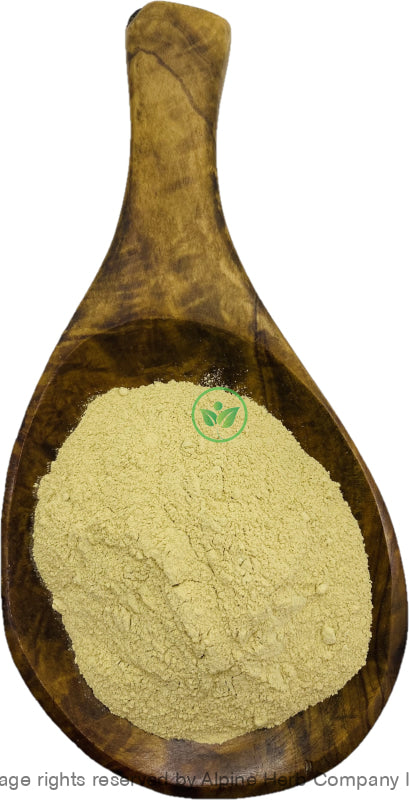Multani Mitti Powder – (Fuller’s Earth) Alpine Herb Company Inc.
$ 5,99 $ 3,59
Botanical Name:
Common Name:
- English: Fuller’s Earth, Clay of Multan, Bleaching Clay
- Also, known as: Hindustani: ملتانی مٹّی, मुल्तानी मिट्टी
Origin: India
General Information:
Multani mitti, meaning ‘mud from Multan’, is also popular as fuller’s earth. Packed with minerals, fuller’s earth primarily contains varying composition of hydrous aluminium silicates or clay minerals. Common components found in fuller’s earth are montmorillonite, kaolinite, and attapulgite, including small amounts of other minerals like calcite, dolomite, and quartz. In some places, fuller’s earth refers to calcium bentonite, altered volcanic ash which is mostly composed of montmorillonite.
The name ‘fuller’s earth’ is applicable to any clay material with the ability to decolourise oil or other liquids without chemical treatment. Historically, the name is derived from the word ‘fullers’ or textile workers. Fullers used clay material for cleaning or ‘fulling’ wool by kneading it with water into woollen fibres to absorb lanolin, oils, and other impurities as part of the cloth finishing process.
As fuller’s earth is a good absorbent, this compound sees a variety of uses today in filters, decontamination, treatment for poisoning, litter boxes, and as a cleaning agent. In cosmetology and dermatology, fuller’s earth is effective as a cleanser, removing oil, dirt, and impurities from the skin and also helping treat acne and other skin problems.- Ref: Femin.in
Precautions:
You should consult with a qualified healthcare practitioner before using any herbal products, particularly if you are pregnant, nursing, or on any medications.
All information on this website is for educational purposes ONLY.
This information has not been evaluated by Health Canada.
This information is not intended to diagnose, treat, cure, or prevent any disease.
| Unit Size | 100g, 200g, 400g, 1kg |
|---|
Prompt shipping and expert packing
Thanks to our longstanding association with UPS FedEx DHL as well as other leading global carriers, we can offer a variety shipping options. Our warehouse staff is highly trained and will be able to pack your goods in accordance with our precise and exact specifications. Your items will go through an exhaustive examination before they will be securely packaged before being delivered. We ship to hundreds of thousands of customers daily in different countries. This is a sign of our determination to become the largest online retailer worldwide. Warehouses and distribution centers are located throughout Europe as well as in the USA.
Note that orders containing multiple items are processed according to the particular item.
We will thoroughly inspect all items ordered before shipping. Most orders are shipped within 48 hours. The delivery time will be between 3 and 7 working days.
Returns
The stock market is always changing. It's not entirely managed by us since we're involved with several entities, including the factory and the storage. Therefore, the actual inventory could fluctuate at any moment. Please be aware that it is possible that your order could be out of stock after you've placed your order.
Our policy lasts for 30 days. If it's been more than 30 days since the date you purchased your item We're sorry to say that we can't offer you a full exchange or refund.
You can only return a product if it is unused and still in the same state as when you received it. The item should be in the original packaging.
Related products
Herb Powder
Herb Powder
Herb Powder
Herb Powder
Herb Powder
Herb Powder
Herb Powder
Herb Powder
Herb Powder
Herb Powder
Herb Powder
Herb Powder
Herb Powder
Herb Powder
Herb Powder
Herb Powder
Herb Powder
Herb Powder
Herb Powder


































